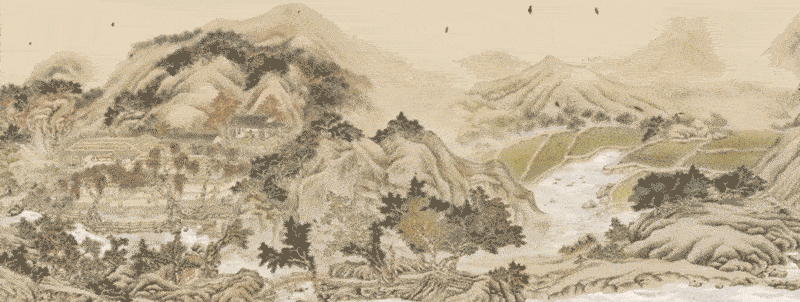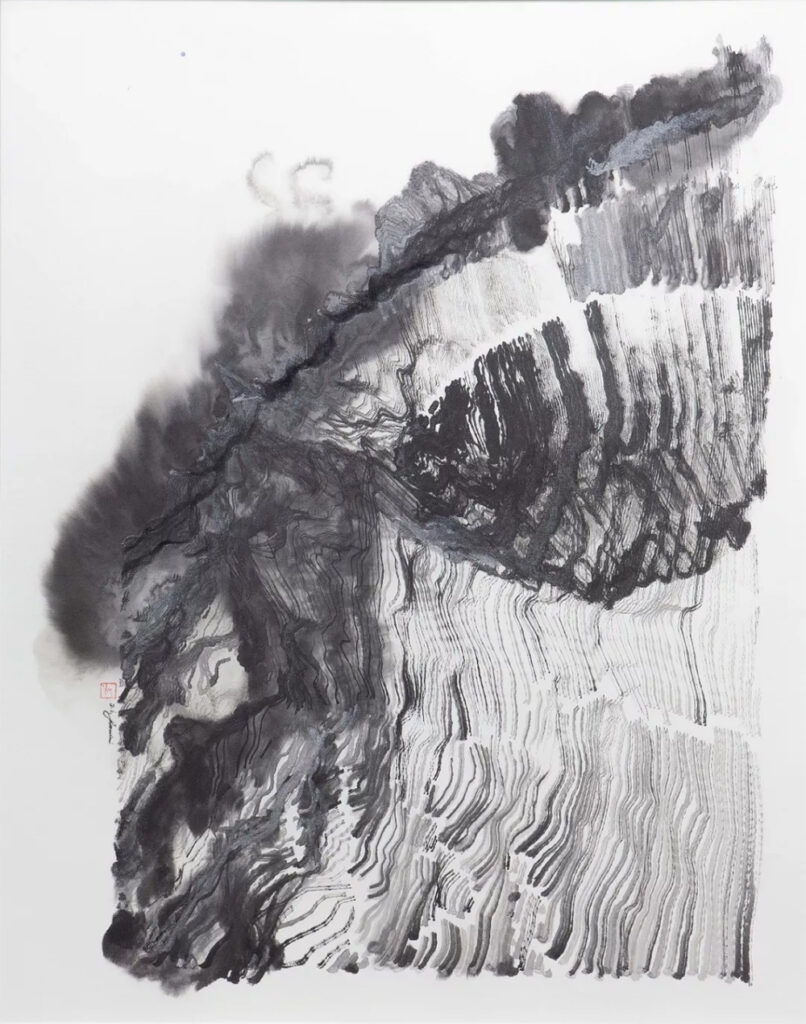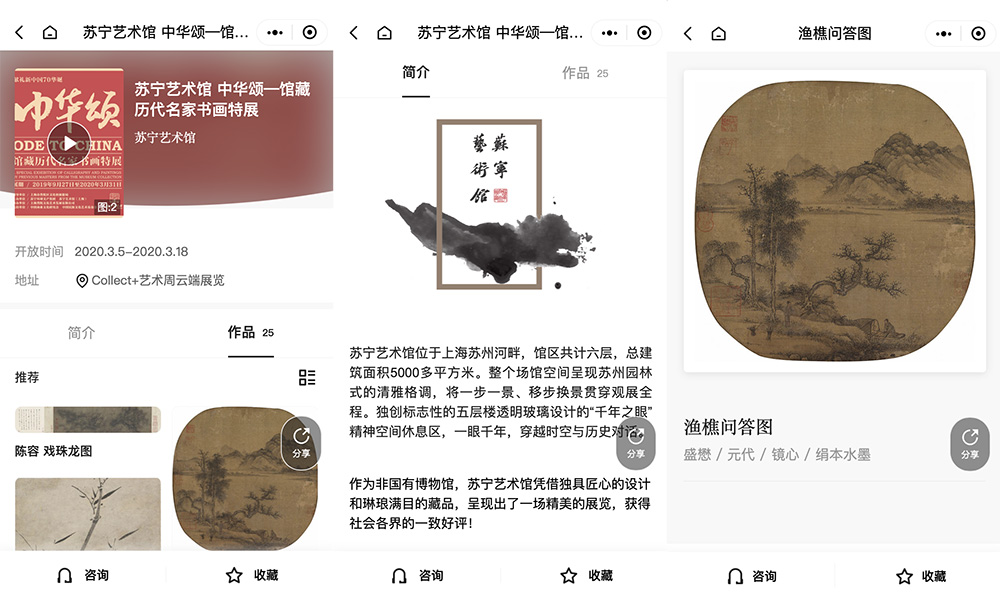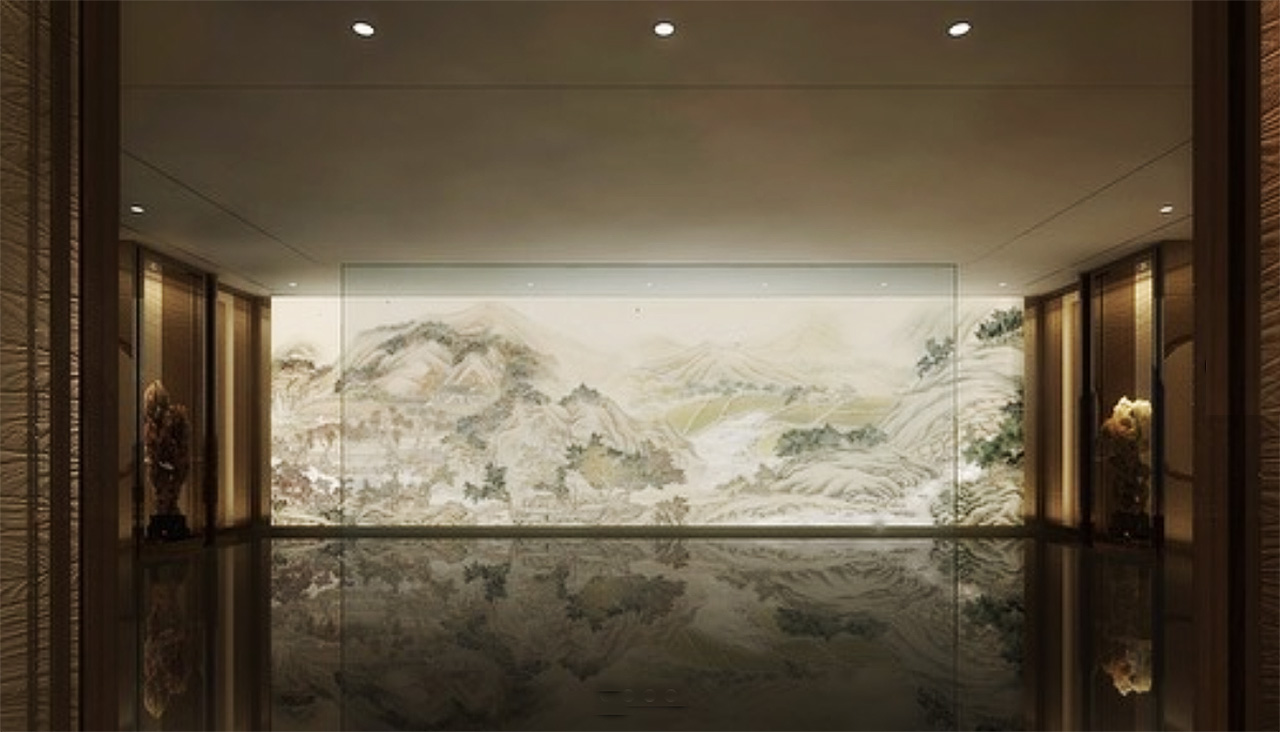For most Chinese consumers, the Suning brand connotes department stores and household appliances, but in recent years, China’s largest retail operator has made its cultural ambitions known. In 2017, Suning Cultural Industry opened the Suning Art Museum in Shanghai, a move “to bring 5,000 years of Chinese history into the museum,” as the institution’s curator Wang Yonghai put it.
In early 2020, the private art museum reported receiving 100,000 visitors the previous year, drawn to its sizable collection of some 3,000 paintings — by masters such as Xia Gui, Wen Zhengming, and Zhang Daqian — spanning the Tang, Song, and Ming dynasties. Historical works aside, the museum has also staged more contemporary exhibitions, such as 2019’s Inquiry on Water (水问) which explored experimental ink art through 11 Chinese artists working today.
In recent years, a wave of private art museums, often backed by multimillionaires or giant companies, have landed in major Chinese cities. But with limited government support and a nascent art-going culture, many struggle to grow audiences and turn a profit. Suning is no different.
To bridge the awareness barrier, the museum has launched initiatives including a series of family-friendly programs that have been commended by Shanghai’s Culture and Tourism Department. On the commercial side, it’s leveraging Suning Cultural Industry’s other properties, which span film and television, animation, and cultural media. One collaboration produced Landscape Views (江山胜览图), an exhibition that integrated advanced tech into an otherwise traditional showing.


Above: An animated painting from the museum’s Landscape Views presentation. Image: QQ. Below: Huang Hongda’s “The Back of The Moon” (月球背面), an artificial intelligence-generated ink work that was showcased at Inquiry on Water. Image: Suning Art Museum on WeChat
“Seven percent of [Suning Global Group’s 2019] profits came from cultural products,” notes Wang. “This demonstrates how the cultural arm has begun to make an increasing contribution to the Group.”
At a webinar hosted by Museum 2050, a platform focused on the key issues of China’s rapidly expanding museum landscape, Wang, along with curator Zhang Yi, shed light on a number of Suning Art Museum’s initiatives that have aided its growth over the past year. Here are three of its key strategies.
Merging tradition with technology
One challenge for institutions exhibiting traditional Chinese art is getting contemporary audiences interested in history. Suning’s effort to contextualize and energize historical artworks centers on deploying advanced technologies.
A cornerstone to this approach has been Suning’s smart museum push, which encompasses the use of augmented reality and naked-eye 3D effects that animate ancient paintings. For instance, at its recent Jiangnan exhibition, which used 50 paintings and calligraphy works to explore the culture of the region immediately south of the Yangtze River, visitors could scan a QR code to access an audio guide that brought the regional dialect to life. At “beauty units” set up across the exhibition, they could get a whiff of historically accurate fragrances.
Growing its digital footprint

Highlights from Suning Art Museum’s Ode to China exhibition were presented on Zaiyi’s WeChat Mini-Program during the first Live Museum Week. Image: Zaiyi WeChat Mini-Program
Even before the past year’s disruptions, Suning’s digital presence included active WeChat and Weibo accounts, and a standalone app that allows audiences to go deeper both on and offsite.
In 2020, the museum responded to country-wide lockdowns with a strong online pivot, as embodied by its participation in China’s first Live Museum Week. Unfolding across two weeks in March, the art fair gathered 30 galleries for a digital showcase on Zaiyi’s WeChat Mini-Program, where Suning presented highlights from Ode To China, its 2019 exhibition of about 200 paintings and ink works from its collection.
Leveraging cultural tourism
Suning actively explores programs that merge culture and tourism — promoting culture through tourism, and vice versa — as part of a strategy to create value for both the travel and art sectors. In light of the past year’s lockdowns, cultural tourism formed a cornerstone of the museum’s programming, notably with its Gannan exhibition, which opened on March 18.
Prior to the event, Suning contacted oil painters and artists in Gannan to create works capturing the region’s customs and natural landscapes. With travel suspended, the resulting physical exhibition allowed visitors to experience Gannan’s rich natural beauty through the eyes of the area’s artists, without having to leave Shanghai. In addition, the museum also established collaborations with local tourism bureaus and travel agencies in the region, and a platform for exchanging tourism resources between Shanghai and the Gannan Prefecture’s Culture and Tourism Bureau
Translated by Min Chen



